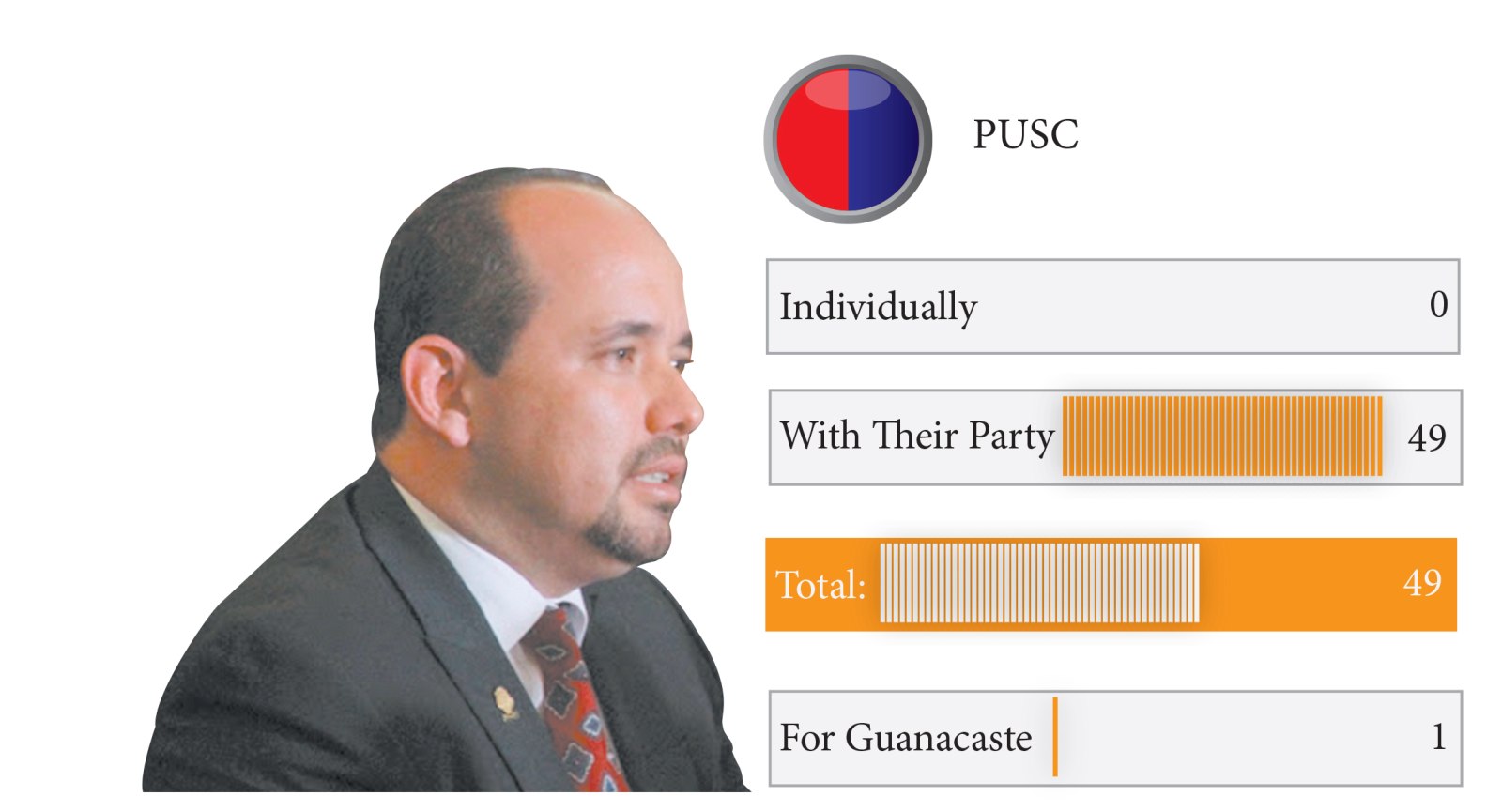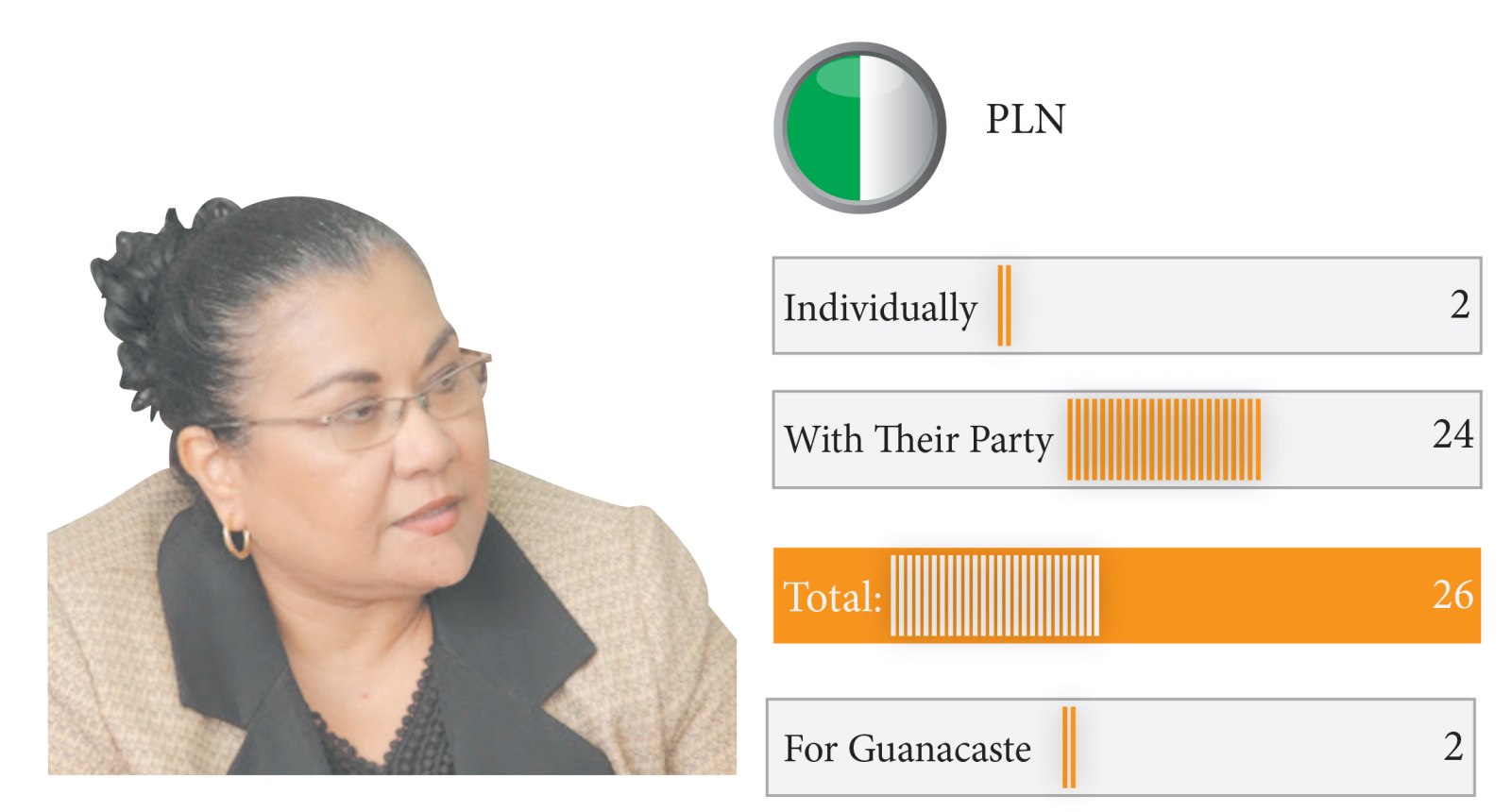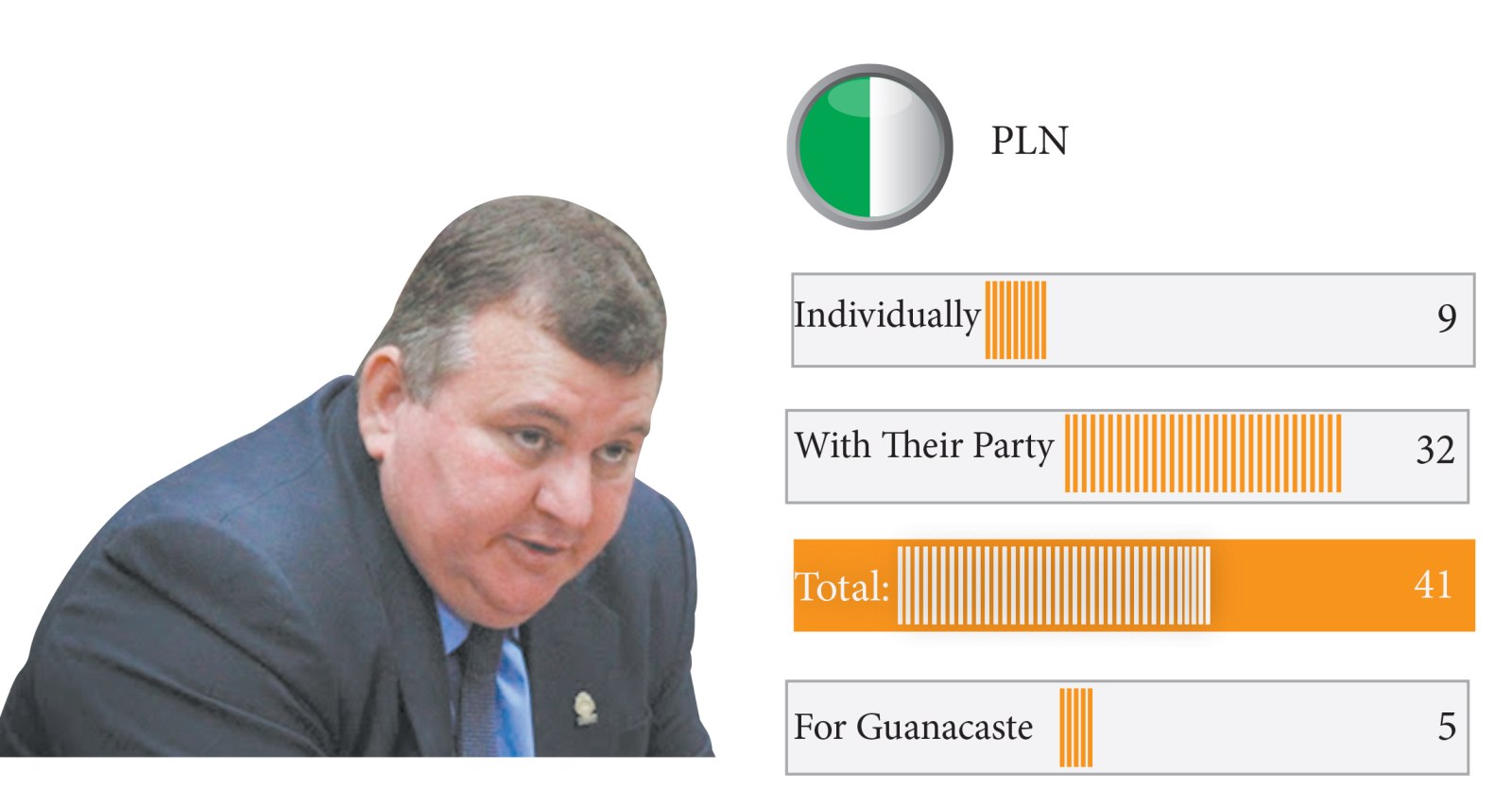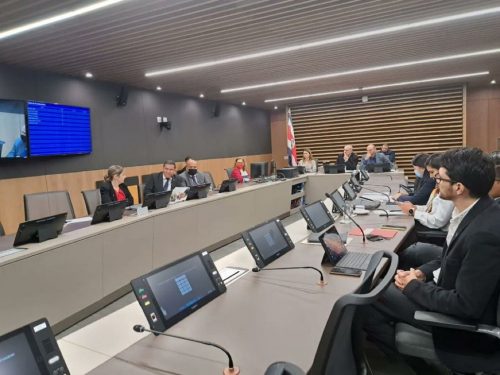
It is the 25th of July and that means it is time for the legislators from the province to render accounts and give explanations to Guanacaste residents for their work a year after beginning their jobs.
The Voice of Guanacaste wanted to find out in advance what the lawmakers will report on July 25th as well as what they will demand from the government. What follows is a tally of the total number of projects that they have submitted so far during their service.
Johnny Leiva
Johnny Leiva Badilla is the Guanacaste legislator who has presented the most projects to date in the plenary. Out of 49 initiatives, only one is exclusive to the province, which is the declaration of the rustic Guanacaste style of bull riding as an intangible cultural heritage.
Among the 49 projects promoted by the Liberian, the presentation for approval of a loan for the generation of geothermal energy stands out.
Regarding the Ostional TECOCOS project, the legislator said he has a positive view of it, unlike the TECOCOS project, and he hinted that it will not be voted for because he thinks it does not solve the problems of the inhabitants of the coastal areas.
“It is not possible to limit a citizen to not being able to have more than 1500 square meters. Instead of preserving what they have, they are going to reduce it. Nor do they give those who don’t have anything the right to go to a bank to request a loan to set up a soda (small restaurant) or a small business. So what we are doing is obligating these people to continue living in a state of poverty,” he explained.
Finally, Levia expressed his concern about the problem of the drought and blamed the Institute of Aqueducts and Sewers (AyA) for having Guanacaste paralyzed.
“[On July 25th], I’m going to protest. It is not possible for this province to be paralyzed because there is no water. What city is going to develop if water is not available? This means that the AyA is an institution that is useless,” he concluded.

Marta Arauz
Nicoyan Legislator Marta Arauz Mora has signed 26 law projects during her term, two of which are for Guanacaste, including the Declaration as Intangible Cultural Heritage for bull riding. Likewise, Arauz presented the declaration of November 30th as National Day of Costa Rican Marimba.
Arauz remarked that one of the projects that has been best received in the plenary was the Declaration as National Hero of former President Daniel Oduber Quiros.
The lawmaker also stressed the project to transform the National Direction of Community Development (DINADECO) into the Institute for the Promotion of Community Development (INFODECO), which aims to give DINADECO its own legal entity so it can act as an autonomous independent institute and thus benefit the development associations.
Amont the issues that concern her are: road infrastructure, housing and the reservoir of Rio Piedras to mitigate the drought.
“I think we should follow up on the projects that are already budgeted until they are fully completed. The drought problem cannot be solved at this time. It has to be dealt with through preventive measures. At this time, a contingency law is needed that can authorize the government to help these producers,” she indicated.
Faced with a possible protest, Arauz indicated that it is possible to do so as long as it is done with respect and promotes dialogue.
On the subject of TECOCOS, the legislator doesn’t believe that it will solve the problems of the inhabitants of the coastal areas and instead, it could harm employment for Guanacastecans.

Juan Marin
Juan Marin is the legislator who has signed the second largest number of projects with a total of 41 proposals. Five of these initiatives are directly related to Guanacaste. One that stands out is an authorization to the municipality of Carrillo to donate land to the ASADA of Altos del Roble and La Cascada de Sardinal.
Also, the legislator introduced an amendment to an article of the law on municipal taxes for the canton of Hojancha and the authorization to donate land to the Coyote Integral Development Association in Nandayure.
In addition, Martin supports the creation of the 5th district of the canton of Hojancha, Matambu, and the declaration of the rustic Guanacaste style of bull riding as an intangible cultural heritage, presented by Leiva.
One of the most recent projects that the legislator is preparing is the creation of a company for Guanacaste Public Services, which would be public, allied with the municipalities and supervised by the Comptroller General’s Office.
Another project that he highlighted is the progress of the Ostional Law project.
“In the case of Ostional, it is a project that has the approval of all of the parties. The opinion has been endorsed by the environmental commission. It is a project that advanced very fast. This is not about who developed the project but about giving a definitive answer to 350 families,” Marin said.
The legislator is also concerned about the subject of roads, and said he will request accountability from the executive branch. “The government is going to have to tell us how many kilometers of new road work they are budgeting for the 11 cantons of Guanacaste. The gravel routes are discarded. The truth is that on July 25th, we continue criticizing that Guanacaste is not [there]. (Legislator) Marta Arauz has to be there because she is the legislator of the canton. If they hand us the microphone, we criticize. It is better that they don’t hand us the microphone because we are going to criticize the president,” he affirmed.

Suray Carrillo
Following the resignation of Ronal Vargas as a legislator in February, Suray Carrillo Guevara took his place. In the four short months that she has been in the Legislative Assembly, the Nicoyan has presented nine projects.
“At this time, I’m fighting strongly for the TECOCOS and Ostional projects, which are projects from us and our people. In the case of Ostional, there was an agreement between Juan Marin and me; we presented a motion in the environmental commission and the changes that we made to the substitute text is the consensus of all of the legislators,” she said.
“TECOCOS is more complicated because there are 60 communities and a lot of interest from big mega tourism projects. They are even talking about making a large mega city in the communities of the Gulf of Nicoya. The municipalities have the idea that it is not profitable to have community tourism businesses.”
In addition, on the subject of the drought, she said that she has “been focused on the theme of water with the drought, denouncing in the plenary; it has consumed me a lot.”
Carrillo is the only legislator who is not part of the Special Commission of Guanacaste, which is composed of the legislators from the province. The reason, according to her, is because she believes she is part of many other legislative commissions and subcommissions and because it was a minority in decision making.
Finally, the Nicoyan announced that on July 25, she will again protest in the streets like she did in 2014, but now as a legislator.
“The marches don’t have to end. The people have the right to demand accountability, even those of us who legislate have to give an account. This year is going to be different. Luis Guillermo Solis is not going to come like last year when he marched with us and we gave him the microphone. This year, he has to bring us results. If he doesn’t come with solutions, it is better that he does not come,” she concluded.







Comments